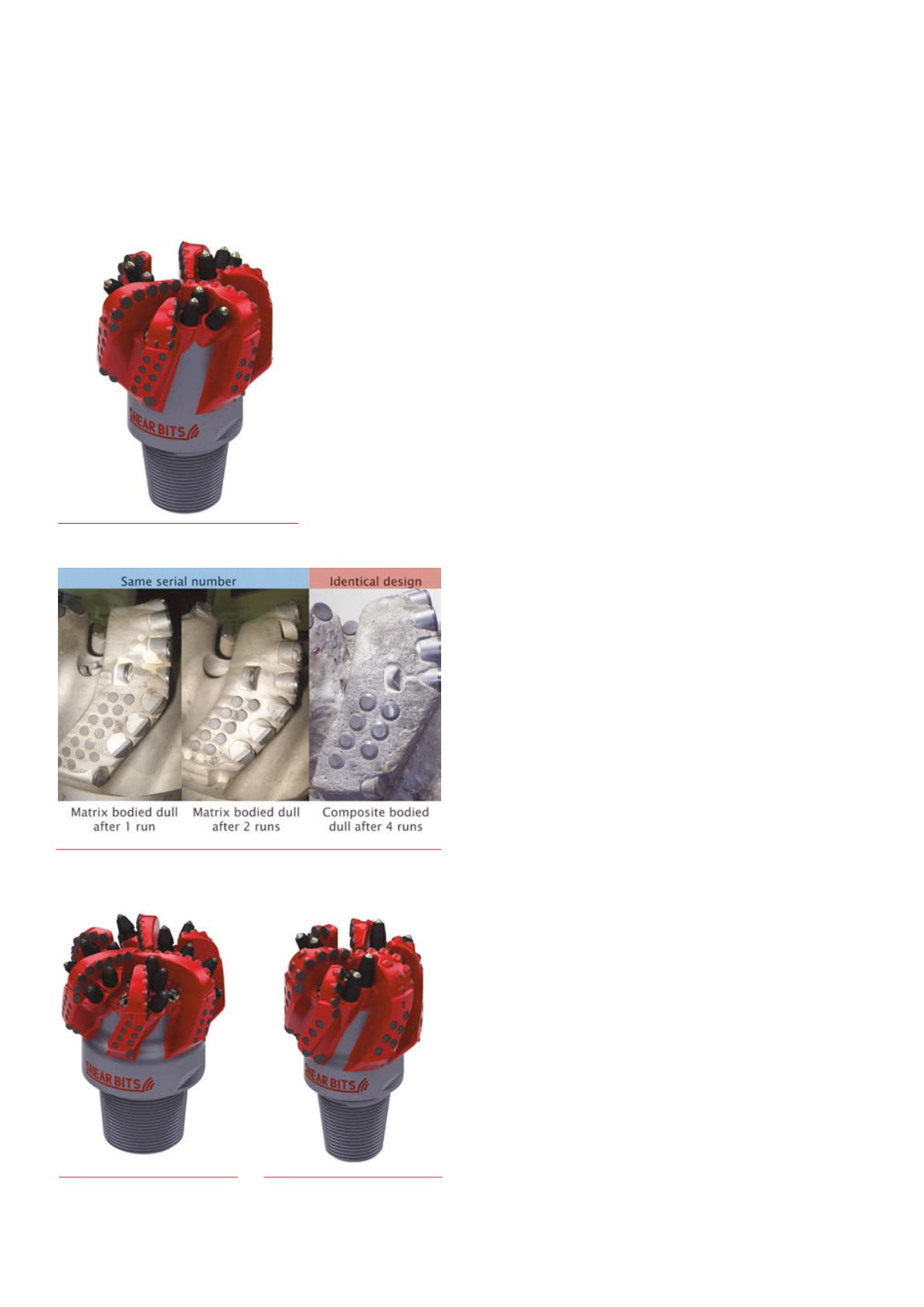
52 |
Oilfield Technology
June
2015
reduced oil prices, has improved economics in what are now
marginal applications.
The most significant development in the world of drill bits
that has contributed to the dramatic improvement in drilling
performance is the changeover from rollercone bits to PDC bits in
most applications. However, it would appear that conventional
PDC bits have approached, or possibly even reached their
technical limit for
market penetration.
It is now estimated
that approximately
80% of the footage
drilled in the world
for oil and gas is
completed with
PDC drill bits.
The remaining
applications
are ones where
rollercone bits are
either used due
to pricing issues
(rollercone bits are
much less expensive
than PDC bits),
due to formation
issues (many types of rock are not PDC drillable) or due to drilling
behaviour issues (in many challenging applications, rollercone
bits are still used due to the challenges associated with managing
torque fluctuations with conventional PDC bits). Unfortunately,
rollercone bits in these applications still carry the same
disadvantages that caused them to be replaced by PDC bits in all
other applications – slow rate of penetration (ROP) and relatively
short life (due to the mechanical limit of bearings and seals).
Thus, an opportunity exists to positively effect the
industry through technology that results in performance
enhancement in the applications that still utilise rollercone
bits; however, addressing the shortcomings of both PDC
and rollercone technologies requires a completely new and
innovative approach. SHEAR BITS’ Pexus™ hybrid drill bit
technology introduces a step change in drilling performance
through a unique combination of rock failure mechanisms:
gouging and shearing (Figure 1). The rotating and gouging
(RNG) inserts remove formation far more efficiently than the
crushing mechanism of rollercone bits, and durability is not
compromised by the threat of bearing or seal failures. Moreover,
the RNG inserts provide greater impact resistance, smoother
torque response, larger cuttings and better hole condition
compared to shearing cutters alone. The result of Pexus hybrid
technology is ultimately an increase in durability and steerability
over conventional PDC bits, while still maintaining exceptional
ROP capabilities.
1
Newtechnology
Pexus hybrid bits have been developed to offer the best
attributes of various leading industry technologies. In addition
to providing enhanced drilling performance characteristics
compared to both rollercone and PDC cutting structures, these
bits are formed with SHEAR BITS’ composite body construction,
which offers improved performance compared to conventional
fixed bladed body technologies. All conventional fixed bladed
drill bits (e.g. PDC drill bits) are constructed either from a steel
body or a matrix body. Steel‑bodied bits have many drilling
performance advantages over matrix‑bodied bits, but typically
lack the erosion resistance required to maintain consistent
durability in challenging applications. The potential performance
benefits of steel bodies are therefore unrealised in many
situations.
Steel bodies have superior toughness and ductility to
matrix bodies, thus making them more flexible to be designed
with geometry that maximises junk slot area and optimises
hydraulics. This results in bits with taller, thinner blades,
which produces higher ROP in many situations, and more
interchangeable nozzles (no fixed TFA) to create efficient
hydraulic layouts in the field. Another significant benefit to steel
body construction is that machined cutter pocket positions are
typically 10x more accurate than the cast cutter locations in
matrix body bits. This equates to improved load sharing on the
PDC cutters in a steel body bit, which produces more reliable
performance and more consistent dull condition. With the
advanced capabilities that exist today for 3D solid modelling and
5-axis CNC machining, there are few limits on the geometry that
can economically be produced in a steel body. Due to all of these
advancements, there are now no performance advantages left for
matrix‑bodied bits over steel bodied‑bits other than the longevity
of the body itself in highly erosive environments.
In order to take advantage of the benefits of steel‑bodied
bits while also improving upon the erosion resistance of matrix
Figure 2.
8
¾
in. Pexus hybriddirectional bit.
Figure 3.
Comparison of dull photos frombit runs in the Canadian
oilsands.
Figure 4.
10
⅝
in. Pexus hybrid
directional bit.
Figure 5.
6
¼
in. Pexus hybrid
directional bit.


